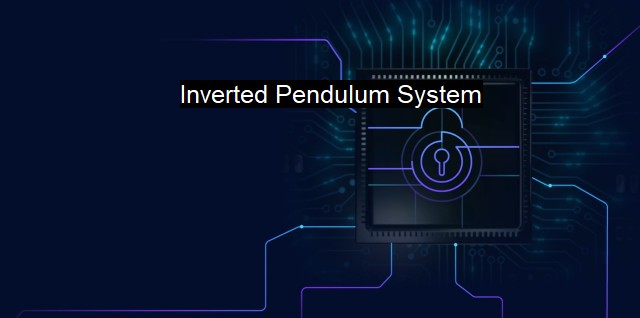What is Inverted Pendulum System?
The Fascinating World of Inverted Pendulum System: Exploring Applications in Cybersecurity and Antivirus
The "Inverted Pendulum System" is an interesting metaphor that finds applicability in a variety of fields, including cybersecurity and antivirus defense contexts. To glean useful insights from this concept, it's essential to have a basic understanding of what an Inverted Pendulum System is.In its simplest form, an inverted pendulum system comprises a tall vertical rod with a pivot point near the bottom. In principles of physics, this is an unstable system. Any deviation from perfect verticality causes gravitational forces to induce an accelerating torque, which further moves the rod away from its unstable equilibrium point. It takes active intervention to keep the rod from falling.
Applying this concept to cybersecurity and antivirus schemas uncovers some fascinating parallels. Just like an inverted pendulum, the cybersecurity environment is inherently unstable. Cyber threats constantly evolve, and maintaining system security is nothing short of a balancing act. Failing to update security protocols or virus definitions may leave systems vulnerable, akin to the pendulum wavering outside its stability point.
The ‘inverted pendulum effect’ can represent the ongoing challenge of maintaining equilibrium between defense mechanisms and evolving threats. As the pendulum swings, businesses must perpetually adjust to changes to ensure the beam never falls. New threats emerge, old threats evolve, and security processes need continuous review and alteration. A more potent antivirus software might constitute the reactive force that holds the pendulum upright in spite of these threats.
In the face of continuous threat evolution, the antivirus' task becomes one of persistence. Antivirus software, analogous to the real-time control that stops the pendulum from falling, must constantly outmaneuver potentially destabilizing effects from new malware or complex cyber attacks.
Cybersecurity and antivirus ecosystems are significantly similar to the inverted pendulum system in the role of feedback, too. In controlling an inverted pendulum, measurements from sensors feed back into the control system to adjust output and maintain stability. constant vigilance in system monitoring for anomalies, regular penetration tests, and frequent hunting threats feed into refinement and reorientation of defense strategies.
These feedback loops in both systems are instrumental in detecting potential risks early and realigning resources to maintain equilibrium, acting much like the control mechanisms used to keep the inverted pendulum from falling. Thus, quick responses to shifting threat landscapes play a crucial role in mitigating risks in cybersecurity.
Another noteworthy aspect is the need for proactive control/strategy. Equivalent to how the pendulum system requires perpetual energy input to maintain its verticality, a cybersecurity landscape also demands a constant injection of strategic maneuvers, prevention tactics, and containment strategies to maintain a state of balance. It's never enough to respond to incidents when they arise; there should be an ongoing effort to prevent the metaphorical pendulum from falling or prevent security breaches from happening.
To sum up, the inverted pendulum system analogy effectively illustrates the dynamic and unstable nature of the cybersecurity environment. It underscores the imperative need for adaptive and sustained efforts in battling evolving threats. It is important to remember that equilibrium in cybersecurity doesn’t mean complete eradication of threats. Instead, it suggests an ongoing, successful effort to handle existing threats while staying prepared for new ones that may surface, not dissimilar to the sustained effort needed to keep the inverted pendulum upright.

Inverted Pendulum System FAQs
What is an inverted pendulum system?
An inverted pendulum system is a type of control system where a pendulum is mounted on a cart, and the objective is to keep the pendulum in an upright position by controlling the movements of the cart. Inverted pendulum systems are often used in the field of automation and control, and can be applied to a variety of different applications, including cybersecurity and antivirus software.How can an inverted pendulum system be used in cybersecurity?
Inverted pendulum systems can be used in cybersecurity by modeling the behavior of a network or user and predicting potential security threats based on that behavior. The system can then be programmed to take action to prevent or mitigate those threats, much like how a cart is controlled to keep an inverted pendulum upright.What are the benefits of using an inverted pendulum system in cybersecurity?
The benefits of using an inverted pendulum system in cybersecurity include increased accuracy in threat detection and response, as well as the ability to automate many security processes. This can help to reduce the workload on cybersecurity professionals and allow them to focus on more complex and critical tasks.What are some potential drawbacks of using an inverted pendulum system in cybersecurity?
Some potential drawbacks of using an inverted pendulum system in cybersecurity include the system's reliance on accurate data and the potential for false positives. Additionally, the system may not be able to adapt to changing threat landscapes as quickly as human analysts can. Overall, it is important to carefully consider the potential benefits and drawbacks before implementing an inverted pendulum system in a cybersecurity context.| | A | | | B | | | C | | | D | | | E | | | F | | | G | | | H | | | I | | | J | | | K | | | L | | | M | |
| | N | | | O | | | P | | | Q | | | R | | | S | | | T | | | U | | | V | | | W | | | X | | | Y | | | Z | |
| | 1 | | | 2 | | | 3 | | | 4 | | | 7 | | | 8 | | |||||||